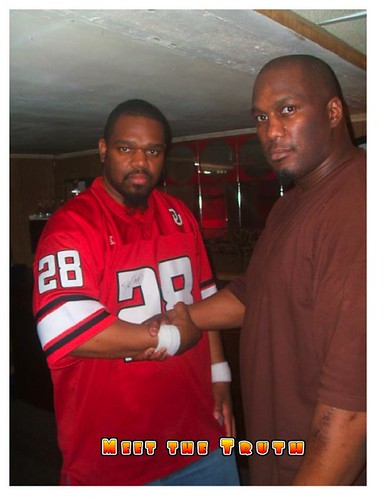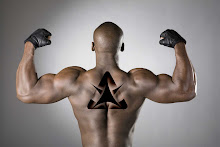Big K at his 70% fastest.
Tuesday, March 2, 2010
Wednesday, February 24, 2010
Constellation at Luther College's Black History Conference
Both will participate in Luther College's Black History Conference Thursday, Feb. 25
As participants in Luther College's Black History Conference Thursday, Feb. 25, New York City-based 52 Blocks researcher and practitioner Daniel Marks and Thomas A. Green, of Texas A&M University, (editor of Martial Arts in the Modern World) are among some of the country's top scholars and practitioners of traditional African and African American martial arts. Also participating in the conference are Richard Merritt, associate professor of art, Luther College; Kawon Akhenoten, 52 practitioner; T. J. Desch-Obi, Ph.D., associate professor of African and African Diaspora History at City University of New York, Baruch College and Yogi Senna of the Minnesota Capoeria Association.
JBR: Why is it important that this fighting art -- 52 Blocks -- not disappear?
Daniel Marks: 52 is a study in cultural transmission under stress. It shows how a community living on the outside of the main or popular culture survived and what it valued. The dynamics of African American life revolved around self identity, a name in description that changed over hundreds of years -- from being called Negro to Colored, to Black, Afro American, and finally African American. During this transition we would lose and regain cultural traditions that were deemed acceptable to the mainstream. 52 is in line with our legacy of boxing in North America which dates back to the 1790s, when an unknown former slave named Bill Richmond "The Black Terror" would make a name fighting for the British Heavyweight Title against their Champ Tom Crib in 1804. Although Mr. Richmond would lose the fight, his exploits became the subject of a BBC documentary detailing his life and triumphs. So in saving 52 we in turn save the legacy of many unknown men who'd boxed and trained boxers from the 1800s to the present.
Thomas Green: The 52s ... are not only fighting methods, but unique cultural contributions, forms of folk art. Recognizing them as such allows them to be used as vehicles for self-actualization and community self-esteem. The 52s, JHR, Knocking and Kicking, Rough and Tumble (for these vernacular martial arts the list of regional variants goes on and on ...) are like blues or jazz (and share many of the same aesthetic principles). Unfortunately, the medium that the art form employs is not one that is likely to bring any invitations to appear at the Smithsonian Folklife Festival any time soon. But then again, who knows?
JBR: How would you describe the cultural significance of 52 Blocks?
Daniel Marks: Now that we have taken charge of bringing this to light, we find that many elders were relieved to unburden themselves by sharing this forgotten knowledge because no one had ever asked about it before. Yet this art of fighting can be seen in plain sight in every expression of culture from dance to music even the way we worship and play. 52 is a relative of freedom fighting arts that have survived throughout the Diaspora. Arts from the Caribbean, South America, and Southern United Stated all share a common theme -- i.e., survival and resistance. This renaissance will allow us to tell about the Buffalo Soldiers, and the Maroons of Jamaica and Haiti; the slave revolts of Brazil and Columbia. As a people we adapted to change and through this journey our expression has become world culture through sports and entertainment, and yet very little is known outside of Black Studies about these accomplishments. The lesson here is to save the content for the next generation and we hope they will see the value and merit in its character, and want to carry on the tradition of culture for the next hundred years.
Monday, February 15, 2010
Thursday, February 11, 2010
Thursday, January 14, 2010
Tuesday, January 12, 2010
Dont Hook with a Hooker Pt.2

Don’t Ever Hook with a Hooker
Part2
By Constellation…
In part one of “Don’t Ever Hook with a Hooker, we discussed several types of offensive hooks; from the Sweeping left hook, to the Hook off the jab. In part two we’re going to let you in on a little secret that the hook can also be used defensively more than a counter punch. Which brings us the dreaded and often left out of discussion Right Hook. Let’s take a look at this vaunting masterpiece of destruction, and learn how to put it into use. The defensive hook is a monster as it’s always short and quick (more like the check hook) that you can throw while backing up, aiming at the arm, neck, and the head. Other targets, present themselves when you dip or slip just under a blow, while arching the hook in a 45-degree angle around the shoulder or elbow to get to the sweet spots i.e. the live, kidney, or right behind the ear. The hook is a true 3-dimentional weapon that any serious boxer needs to have in his\her arsenal to be an effective fighter.
Another Defensive hooking tactic like the Retreating Hook is done by stepping backward sliding your left foot to the right, which closes off the body, while throwing the left hook around the attacking arm, this is a classic counter to a straight right hand. But when it comes to defending using the hook the Right Hook becomes the weapon of choice at least in Constellation method of 52; combined with the proper footwork you can throw a medley of counters at your opponent, and rock him out of his socks. Using the clock as a guide the 3 positions of the counter right hook\overhand are as follows: right foot 3 o’clock short hook, right foot at 4:30 arching hook, and the right foot at 6 o’clock overhand hook. The key to these 3 hooking positions are shifting the weight from your back foot to your front foot, changing the body angle while slipping the jab, cross or left hook.
Right foot 3 O’clock:
The execution of this hook is where you place your right foot for the counter.
Like the name implies you’re going to step from the rear with you right foot stepping to the 3 o’clock position on the floor. Pivot on your toes letting your left shoulder fall back while countering over the jab with a right hook.
Right foot 4:30:
The execution of this hook is how you shift your body into your rear foot, which is already sitting in the 4:30 position on the floor. Planting your weight on your right foot and sitting hard to the power side, outside slip, known as a shoulder roll with your left shoulder. Rock back to the left keeping the angle you have created, and counter the jab by throwing an arching right hook. The key to this hook is to stay behind your left guard, which will shield you from his cross.
Right foot 6 O’clock:
The execution of this hook starts when you place your rear foot in the 6 0’clock position on the floor (right behind you) shift your weight to your rear foot, sit angling your shoulders so that you left shoulder is blocking the cross. This rocking or shifting motion draws you away from the jab, cross and allows you to lean in and counter from a safer distance.
We can extend the concept of hooking even further when we use it in the Clinch and tie-ups’ while fighting in tight. Using the Hook to catch instead of throwing a blow to drag your opponent’s arm pulling them off balance. One way is by grabbing under their elbow known as under hooking, or reaching over the outside of the arm known as over hooking. When combined you have a nice tie-up much like the control that Mike Tyson used on Evander Holyfield while biting his ear. These wrestling holdovers are from the days when Boxing was as brutal as playing football without a helmet. (Or was I the only one to do that?)
As you can see the Hook is far more than a punch it’s a tool, that when mastered can be a very formidable option, as the saying goes don’t ever Hook with a Hooker. I’ll end this with a little song just for the hookers; no, this isn’t pimp talk 101, but a look into the rhythm of a boxer as he delivers the crashing blow.
I move but my feet are never plated, anchoring them just makes me labor my steps, need to stay flexible and ready to strike, any at range or distance I can deliver. In, I move, bobbing, weaving, dipping Joe Frazier slipping. Digging deep behind cross hands, I peep, waiting for the movement to release this unsuspecting threat. Boom! There it goes that sneaky left hook right out of the bob and weave. I dipped then another one crashes flush on his face. Jaw locked, his neck to stiff he falls Back. Bang! He never saw that one coming, what a fantastic connection leaping off the floor sweeping the hook repeatedly to the head and body of the now fallen challenger.
When I move I groove, slipping and dipping, inching forward setting the pace. I’m on my grind just before I rack that smack on that ass. He shoots the jab, I dip and shift slightly off to the side, 45 degree I slide, ease back and release the crack, smack across the jaw line, make him shake and wiggle his spine. Quickly firing two more shots to his kidneys and liver, freezing the body in space. He grimaces in pain then collapses, cause a well placed hook detaches membrane and blood vessel in the brain. Can you dig it now that’s a Hook…
Daniel "mwalimu" Marks




